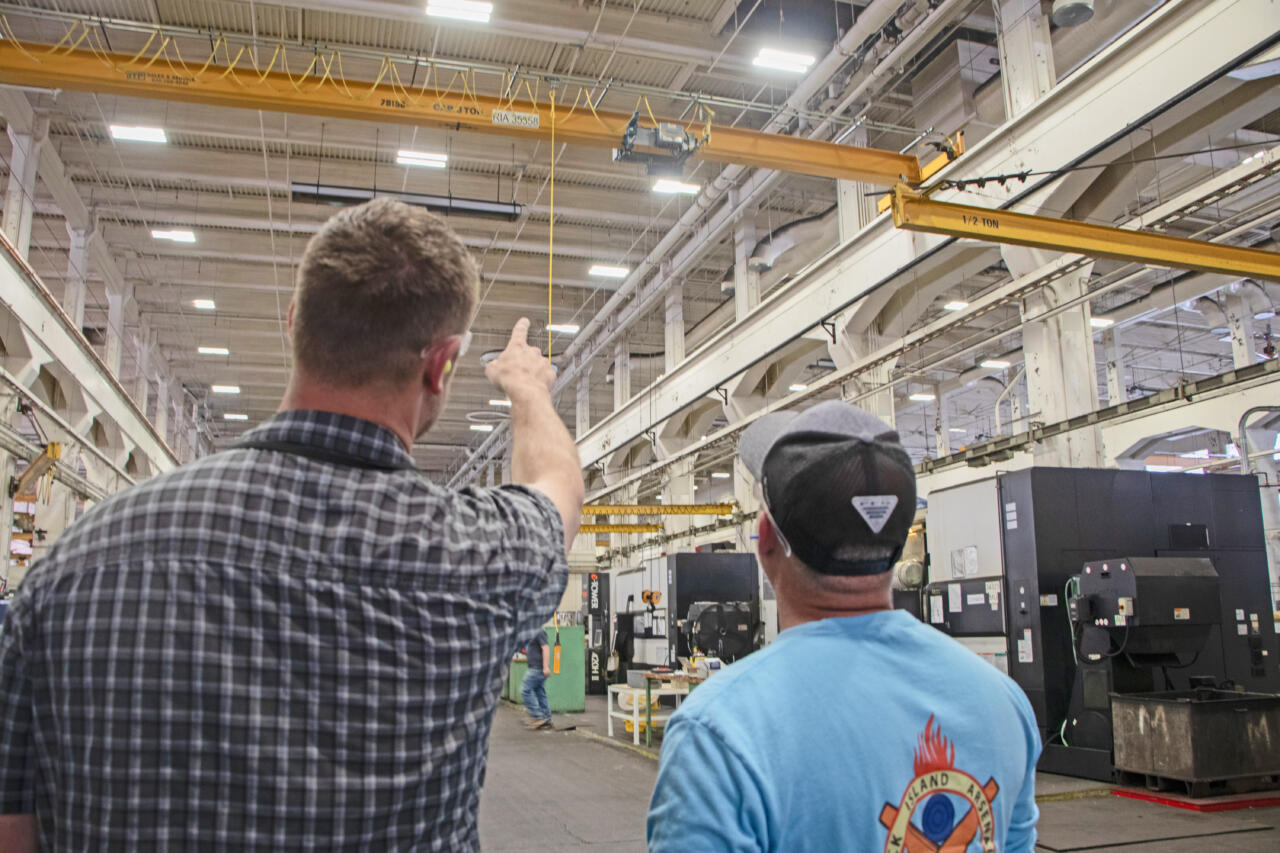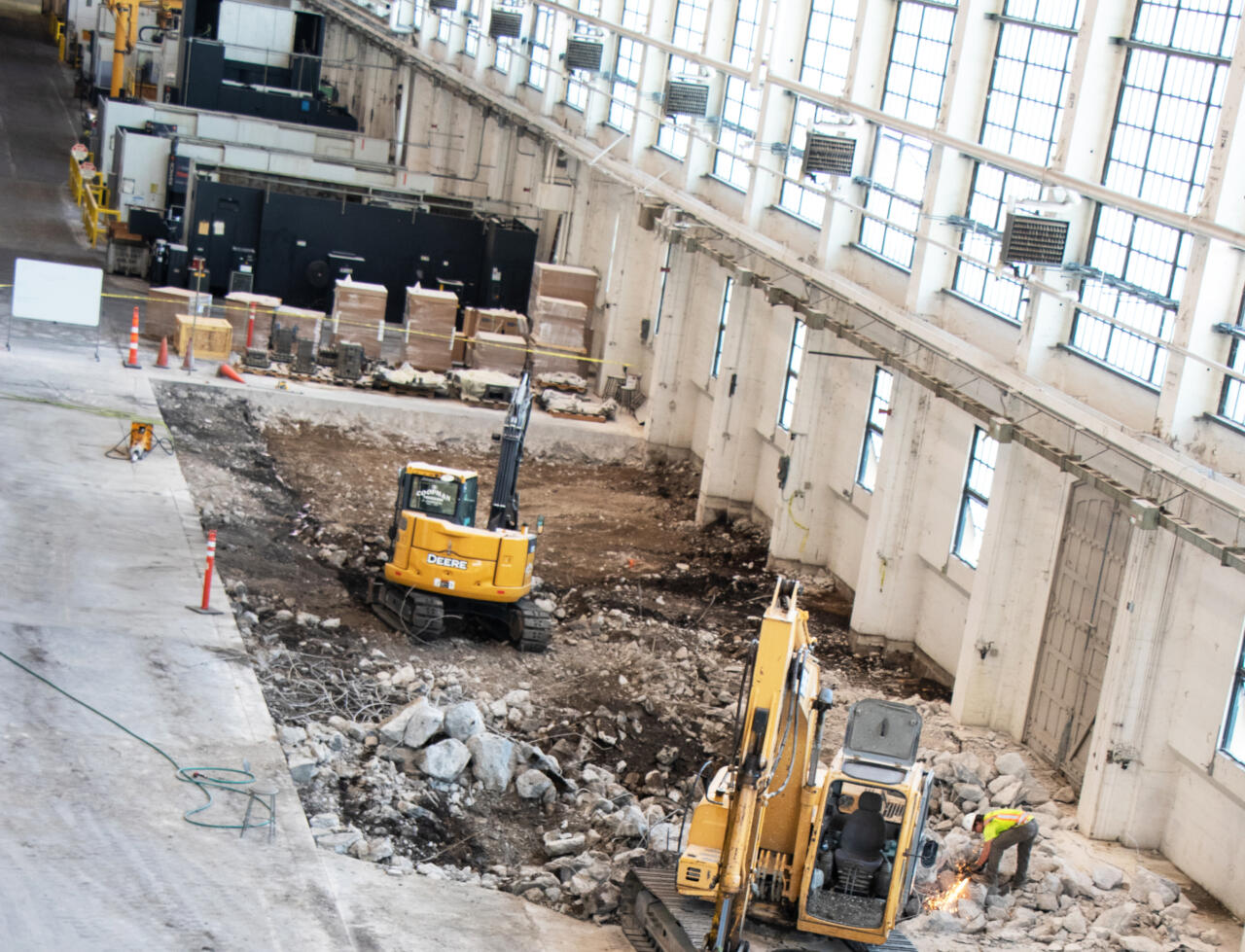
In 2024, the US Army completed the first of a 15-year Modernization Implementation Plan for the Organic Industrial Base (OIB), a network of government-owned facilities including arsenals, depots, and ammunition plants that sustain the US military by manufacturing, resetting, and maintaining equipment. A recent CTMA project has supported these efforts by advancing the OIB’s capacity to produce parts needed to meet operational demand. The project, a collaboration between Rock Island Arsenal Joint Manufacturing and Technology Center (RIA-MTC) and industry partner Fives Liné Machining Systems, Inc., successfully assembled an advanced modular automation manufacturing line that produces more reliable and less expensive mechanical components for military vehicles.
This state-of-the-art capability, installed at RIA-JMTC, which will be demonstrated later this year, will transform raw aluminum billets into finished, treated, and painted vehicle parts. The manufacturing line handles large aluminum billets weighing up to 5,015 pounds.
“The team produced a complete cell that can accommodate the full processing of aluminum slabs,” said Carl Duchesne, Project Management Office Director, Fives Liné Machines, Inc. “The project had three phases. In the first phase, the team installed one robotic asset and one machining asset, along with the integration of conveyors and a shuttle system to move the parts around.”
The manufacturing line contains two zones. The first zone—raw material preparation and rough machining—is equipped with an automatic band saw and a robotic machining cell for roughing. The second zone—finishing and post machining treatment and painting—consists of a CNC machining cell for finishing, a chromatic treatment bath, and a paint booth. The other major component of the line is a transport system comprising overhead cranes, a parts transfer shuttle capable of navigating the line, and parts tilting stations.

Machining operations are physically separated into roughing and finishing cells, with a distinctive layout that places the machined part in a vertical position in the middle of the cell and between the two machining centers, each of which works simultaneously on opposite sides of the part. This layout was designed to optimize machining times and ensure a competitive workflow. Roughing is performed with an exclusive solution of machining robots developed by Fives Liné Machines, while finishing is performed by 5-axis CNC Horizontal Milling Machines (HMM), belonging to the industry partner’s standard machine range.
In the second phase, the team added two more assets to increase productivity: one (dual) machining asset cell and one (dual) robotic cell asset. The third phase established a solution to manage the debris (chips) produced during cutting operations and upgraded the electrical capacity of the site to meet the demands of the production line.
This final line is equipped with two robotic rough machining cells (2 robots per cell), two finishing cells (2 High Precision Machines per cell), two shuttles, and multiple stock stations to support and improve production rates. The project team also created a training plan and documentation for operators and maintenance personnel.
“The biggest success of this project will be the production of a custom-built solution for RIA-JMTC,” said Duchesne. “The collaboration has been very good. Working together, we raised the bar to create a complex solution to support the installation’s readiness.”
The advanced modular automation manufacturing line created and demonstrated in this project will enable RIA-JMTC to produce a wide range of precision-machined, reliable parts. The use of automation reduces manpower requirements, enhances safety, and ensures the production of consistent parts, further enhancing product quality. The manufacturing line—designed to be easy and cost-effective to install, operate, maintain—could be modified and installed at other arsenals, depots, and shipyards, giving those locations the ability to quickly reconfigure existing manufacturing facilities with a proven, adaptive solution. Beyond the DOD, the processes and assets employed in this initiative could be adapted for a wide range of industries seeking to upgrade facilities with an advanced modular automation manufacturing line that builds more reliable and less costly mechanical components.




